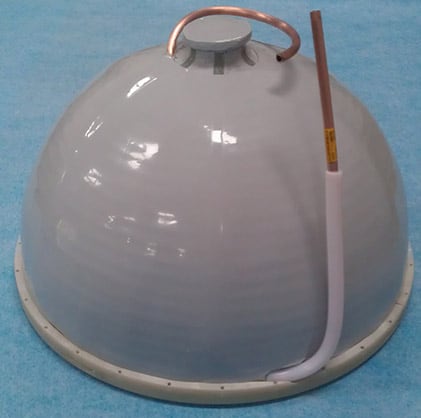High-density plasma domes have traditionally been used as decorative objects due to their unique lighting effects, but they are also an integral part of the semiconductor manufacturing industry. This blog will explain high-density plasma domes and their modern applications in further detail.
High-Density Plasma Domes
Also called a plasma globe, a plasma dome is a clear glass ball or container filled with a mixture of different noble gasses and a high-voltage electrode at the center. Plasma forms within the container when you apply voltage. Consequently, plasma filaments extend from the central electrode to the inner walls of the glass insulator. The result is the appearance of several beams of colored light.
Different variations of high-density plasma domes exist. The most common variation is a clear glass sphere filled with gas mixtures at close to atmospheric pressure. These gas mixtures may include neon, krypton, xenon, and argon.
The globes run on high-frequency alternating current. In most cases, the driving circuit is a type of power inverter, where a lower-voltage direct current supplements the inverter’s output with the help of a high-voltage, high-frequency transformer.
Applications of High-Density Plasma Domes

- A ceramic bell jar
- A cooling/RF coil
- Ground tabs/slugs
- Machine parts
- A non-conductive elastomer
In semiconductor applications, high-density plasma chemical vapor deposition (HDP-CVD) is a technique that creates the crucial layers of insulation that separate and protect the electrical components. High-density plasma domes can be categorized based on the type of gasses they contain and their applications, which typically include RF assemblies and silicon wafers.
In addition to decorative and recreational purposes, high-density plasma globes can be part of an institution’s lab equipment for demonstration purposes. In particular, high-density microwave plasma machines can produce ions and free radical species. In these applications, the machine is made of a plasma source, the circuit, and the applicator.
High-density plasma domes can also be used in silicon wafer and RF assembly applications, where they are susceptible to damage with regular use. That’s why it’s important to partner with a reputable refurbishment and repair company.

- Avoid bringing flammable items near the globes.
- The domes may emit certain frequencies that interfere with phone and Wi-Fi signals. Therefore, keep them away from such areas.
- Since they radiate electromagnetic waves, avoid operating the domes near people with pacemakers.
Custom Coils Capabilities
If you’re looking for high-density plasma dome repairs and refurbishments, Custom Coils is here to help. With over 30 years of experience, we are experts at developing high-quality, repeatable production processes for high-density plasma domes. We have shipped over 10,000 high-density bell jar parts, and we remain ready to take on any repair or refurbishment project, no matter how challenging or complex. What sets us apart from other suppliers is that we understand how critical parameters relate to material makeup.
Contact us to learn more about our capabilities, or request a quote to begin your project.
